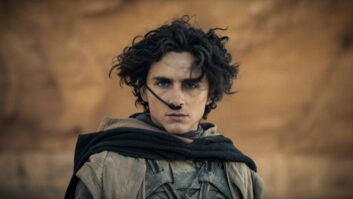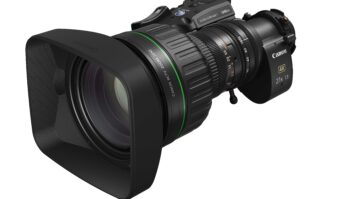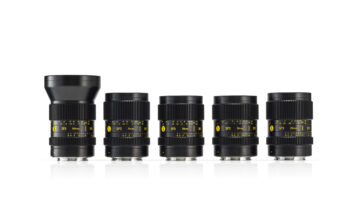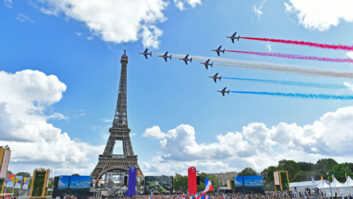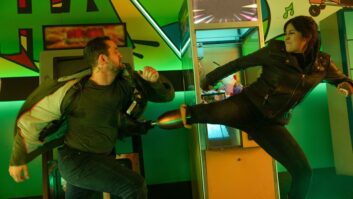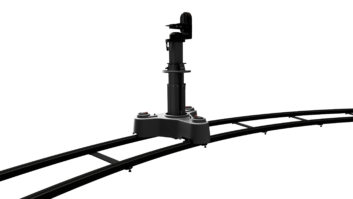The story of a meerkat named Maghogho and her quest to establish a dynasty in the remote salt pans of Botswana looks set to be one of the TV highlights this festive season.
Meerkats: A Dynasties Special is the first stand-alone film to follow on from the BBC’s Dynasties series, originally broadcast in 2018. The film was shot between September 2019 and March of this year when filming was halted due to the pandemic.
Despite the challenges of filming in the Makgadikgadi salt pans, producer Emma Napper tells TVBEurope the meerkats felt like the perfect choice to be the subjects of this special. “For Dynasties we’re always looking for stories where the individual animals have got a real challenge to try and lead their group and where they leave a significant dynasty,” she explains.
“Meerkats definitely fell into that group. They seemed like a really obvious thing that we wanted to do for Dynasties, but we needed to find the right family. I went to an area where the meerkats are not generally filmed, the Makgadikgadi salt pans, which is one of the most challenging places for them to live. I met a couple of the meerkat families around that area, found Maghogho and it felt like she was at the start of trying to establish her family and her dynasty.”
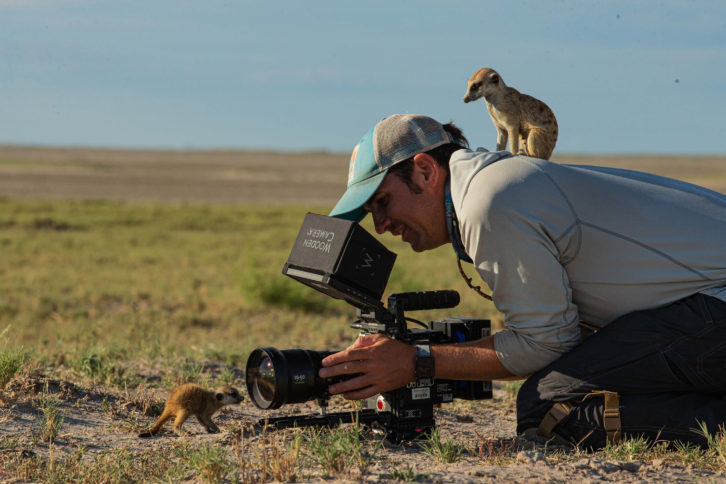
The production team in Botswana consisted of two camera operators, a director and a guide. The team would leapfrog one another in order to ensure there would always be somebody with the meerkat family so nothing was missed. That meant long days in the field. “We’d be with them before dawn every day, which meant leaving camp between 4-4.30am and then we’d get back to camp after dusk about 8pm,” explains Napper. “It’s a long day, but that’s our job, it’s what we love. In order to catch the moments we need to be there as much as we can.”
“We used a combination of cameras, a traditional long lens setup, so a Red or a Venice on a long lens with a BM-20, which is the kind of workhorse lens for wildlife,” she continues. “Sometimes we had two operators working on separate cameras on tripods, one person might have a macro camera or a prime, and the other would have the log lens camera.”
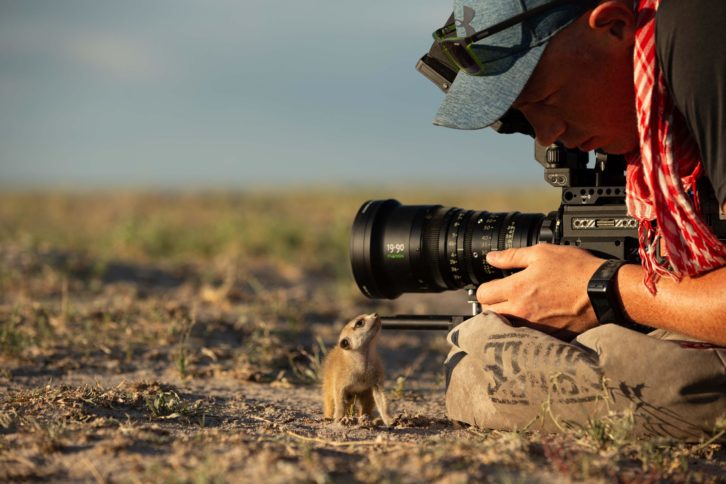
Shooting also included a rolling setup, where the camera would be mounted on a gimbal so the meerkats could be followed on foot. “The other main piece of technology that we used was the Shotover, so a gimbal mounted on the car. This is the first time I’ve ever filmed the same animal on macro lenses and a gimbal mounted on a car,” Napper laughs. “You need cameras where you can get close to the meerkats and get really intimate shots, but you also need to be able to stand back, especially when they’re running around and behaving dramatically, you need to be able to follow them.”
Working in the salt pans can’t have been easy – how did the team ensure their tech was able to stand up to the extreme temperatures? “The parameters can be quite extreme, it can get down to almost freezing at night at some times of year, and then other times during the day it gets up to 50 degrees or so,” states Napper. “But the kit’s fairly resilient, and we’re used to working in those conditions. I think the main challenge in terms of the environment had more to do with the dust storms that would come up. You obviously want to film as much as you can, but the dust and the rain can fill cameras fairly quickly. I wish I had a high tech solution as to what we would do, but basically we’d just cover them, shelter and then try and stick it out for as long as we could.”
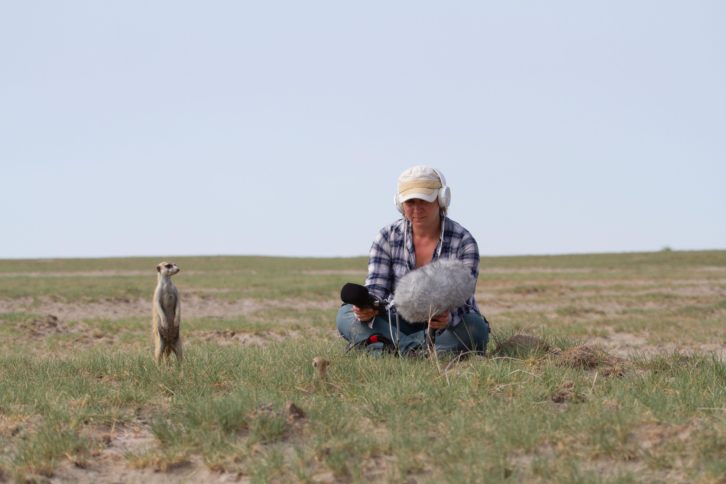
Surprisingly, Napper says that wasn’t the toughest part of the shoot. “I think the biggest challenge of filming was trying to follow such small animals. We tried to film everything on their eye level because you want to tell their story. It was really just about managing to capture their behaviour right on their own level.”
The show’s sound was also recorded on location, which again proved to be somewhat challenging at times. “You can’t really get across in the programme just how incredibly windy it can be there sometimes. It’s kind of lovely recording the meerkats but also slightly frustrating when you have the pups around. You get some really nice sounds of their begging calls to the adults and then they start running around and come and stand right next to the microphone and tap it. So all I can hear is banging through my sound recordings!”
Working in the remote salt pans of Botswana meant there was no internet on hand to help with transferring files at the end of each day’s filming. Instead, once the team arrived back at camp each night, they would download the day’s footage, which often meant getting up in the middle of the night to change the cards.
In terms of logging what was going on, that was done manually both during the shoot, and when Napper arrived home in Bristol. That’s not an easy task when you shoot over 250 hours of footage! How on earth did Napper manage to reduce all that to just 60 minues? “It’s definitely a challenge with that much footage,” she says. “But, most days in the field you’re writing down what’s happening. You have these key events that happen, so you know that was the day when they crossed the salt pans, for example. We know to some extent where to look to get that footage. Sometimes people ask me why we film so much footage but of course certain moments may only happen once and that’s what we’re covering, you can’t switch the camera off and miss it.”
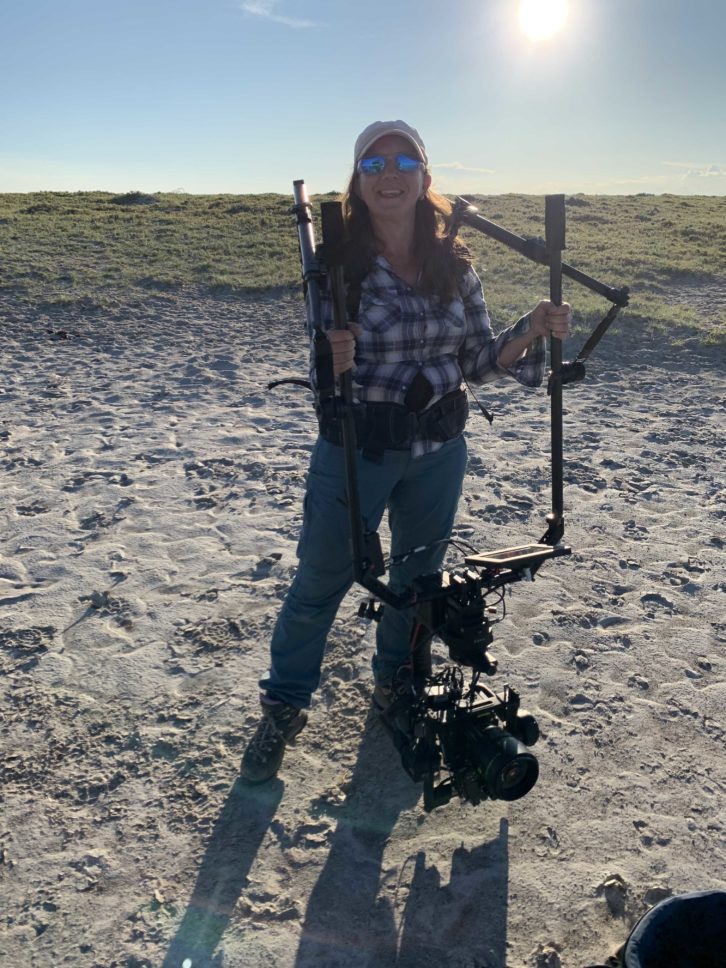
“All the way through filming there was a very tight team of us across the story,” she adds. “We were always talking to each other. When we got back it was kind of weird not having the team around, and I essentially had a couple of months on my own in my attic logging all the footage and getting it in order for the editor. We worked on it from the middle of May until August and for a lot of that time, he was in his house, and I was in my attic. It was much slower than it would normally be because you can’t just chat to somebody, and it was very frustrating especially when you get days where the internet’s down. After a few months we were allowed back into workspaces and we were able to work in a big edit suite on opposite corners, wearing face masks. That was just so much better to be able to do that together.”
Like the series before it, Meerkats: A Dynasties Special is narrated by Sir David Attenborough. His voice over was recorded remotely. “He’s got a set up in his house and we directed him from our post house in Bristol,” explains Napper. “The actual process of recording is probably a couple of hours. He’s involved with the scripts and he’s across what’s going on in the field. But on the actual day that you do the voice recording it just takes a couple of hours.”
Finally, what does Napper hope audiences get from the programme? “I hope they’re going to see a dramatic and emotional story,” she says. “We know Meerkats are cute and gorgeous, and that’s all in the film. But this is also quite a surprising film, quite dramatic, and quite emotional. There are some real moments of tension and drama.
“I hope that in the end people will feel uplifted by Maghogho’s story. She’s an incredible animal, incredibly tough, much tougher than we could ever have expected. I just hope they love watching her story.”
Meerkats: A Dynasties Special will be broadcast on Monday 28th December at 7.30pm on BBC One.
